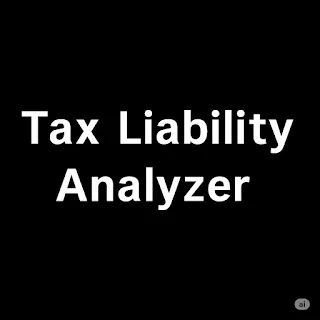Interactive Tax Calculator (2024)
This section brings the tax calculation process to life. The form below is pre-filled with the case study from the report. Change any value to instantly see how it affects the entire tax liability calculation, from Gross Income to the final amount due. Use the info icons ? for a quick explanation of each term.
Your Financial Profile
Tax Liability Breakdown
Regular Income Tax
Net Investment Income Tax
Total Federal Tax Liability
Total Tax Composition
Core Concepts
Understanding your tax calculation requires knowing the key terms. Click on any concept below to learn more about its role in the U.S. tax system. This section breaks down the foundational building blocks of your tax return.
Tax Rates & Brackets
The U.S. has a progressive tax system, meaning higher income is taxed at higher rates. Use the controls below to visualize the tax brackets for different years and filing statuses. Hover over a bracket in the chart to see the specific income range and tax rate. This demonstrates how only a portion of your income falls into each bracket.
The 3.8% Net Investment Income Tax (NIIT)
The NIIT is an additional surtax on investment income for higher-income individuals. Liability depends on a two-part test. The flowchart below explains this test, and the mini-calculator demonstrates the crucial "lesser of" rule used in the final calculation.
NIIT Liability Flowchart
Step 1: MAGI Test
Is your Modified Adjusted Gross Income (MAGI) over the threshold for your filing status?
- $250,000 for MFJ
- $200,000 for Single / HOH
- $125,000 for MFS
Step 2: NII Test
Do you have Net Investment Income (NII)? This includes interest, dividends, capital gains, rental income, etc.
If YES to both...
You are subject to the NIIT. The tax is 3.8% of the lesser of your NII or the amount your MAGI exceeds the threshold.
"Lesser Of" Rule Calculator
NIIT Owed
Tax Mitigation Strategies
Proactive planning can help reduce your overall tax liability, especially the NIIT. Strategies generally focus on reducing your MAGI or your NII. Explore the common techniques below to learn more about advanced tax planning.

